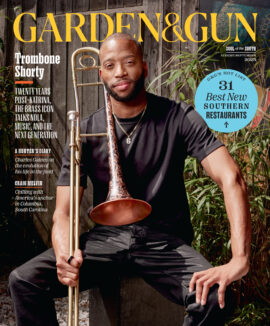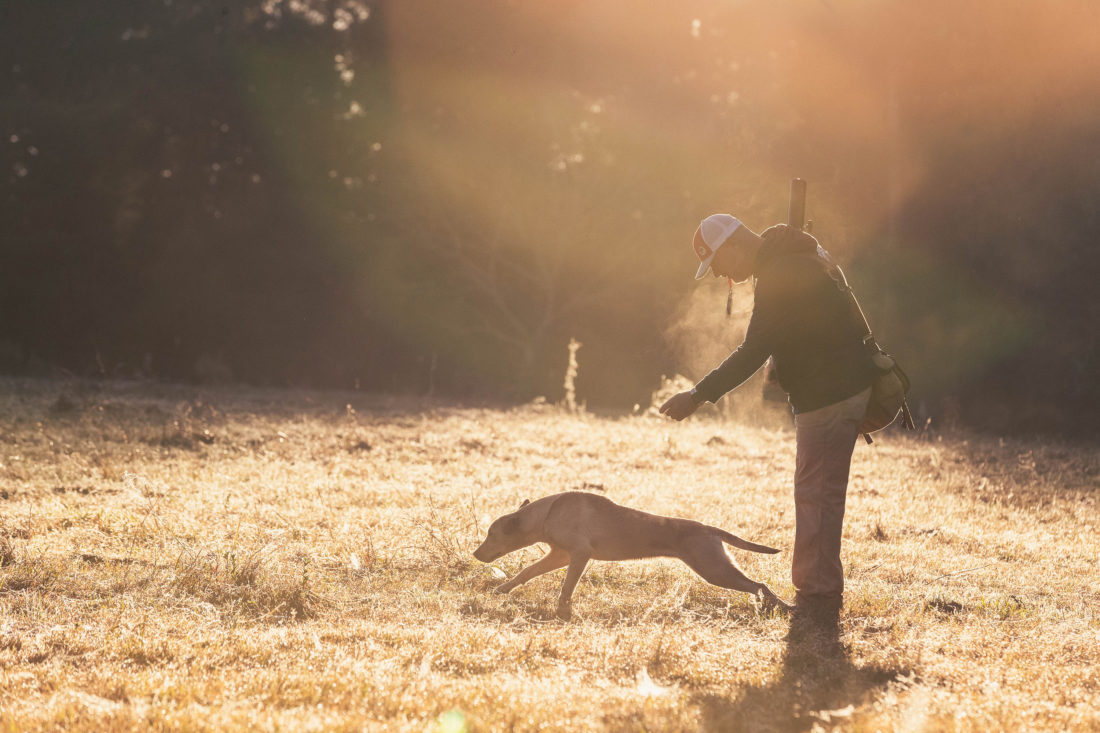Third-generation dog trainer Jeremy Criscoe, the owner of Whistling Wings Kennel in Alabama, has a global perspective on what makes canines tick: He breeds and trains British Labrador retrievers and has competed in field trials in Scotland, England, Wales, Ireland, and across the U.S. Much of Criscoe’s training methodology is rooted in the U.K. approach, in which self-control on the dog’s part is paramount.
To tune a waterfowl retriever’s self-control, Criscoe says, a sporting clays range makes a perfect laboratory, and he’s put together a three-step training regimen for a standard sporting clays course. If you don’t have access to a sporting clays range that will allow dogs on the course, it’s easy enough to duplicate these scenarios with a buddy and a hand-held or mechanical skeet thrower.
Education on the range begins the moment you arrive. Dogs should always be under control. “They only load on the load command, and release on the release command,” Criscoe explains. At the range, Criscoe might make several trips between a UTV and the gunning station, to carry out the gun and shells, or to set a few blind retrieves for advanced training. “The dog learns to patiently wait,” he says. “Then make the dog heel with you from station to station. Every movement can be a useful training moment.”
At the first station on the clays range, have the dog sit and stay steady while you shoot from the gunning station. “If the dog breaks, you’re right there for the correction,” Criscoe says. “You can put your gun down, go get the dog, and bring him back.” You’ll want to make corrections all the way back to the station, with firm lead control and a stern “No, no, no” delivered in a low, displeased tone—what Criscoe calls a “pirate growl voice.” Get the dog back to the gunning station, have him sit and stay, and break a few more clays. This time, he suggests, stand on the lead so the dog can’t break.
You’ll dial up the difficulty on the second station, and it comes with a twist: Have the dog sit and stay steady while you pitch out a bumper behind you. Then shoot a clay target or two, and only then, if the dog remains steady, do you send him for the bumper retrieve. “This way, you’ll quickly reward the dog for not breaking,” Criscoe explains. “You’ll emphasize the positive behavior.” And you’ll teach the dog that he doesn’t get to run and retrieve every time a shot goes off. “Just because they see a bird come in doesn’t mean they get to go get it. They only go when you tell them to go.” After all, no one connects with every bird.
For an even more challenging exercise, Criscoe likes to set a pair of training dummies off to the sides of the gunning station, about twenty degrees to the left and right. Break a few birds, and perhaps have a buddy shoot as well. “The dog is watching a bunch of clays get busted right overhead, but you tell him ‘No,’” he says. After the shooting is over, then line the dog up and send him on the blind retrieves. This requires a lot of multitasking, which sharpens a dog’s ability to pay attention.
Now complete the course, rotating between the three strategies.
This story is part of a series of articles on sporting dog training tips from Eukanuba Pro Trainers. See the series here:
>> Advice for a Young Dog’s First Dove Hunt
>> Introducing a Bird Dog to Noises and Water
>> Retriever Training at the Clays Course
>> The Importance of “Whoa” for Bird Dogs










